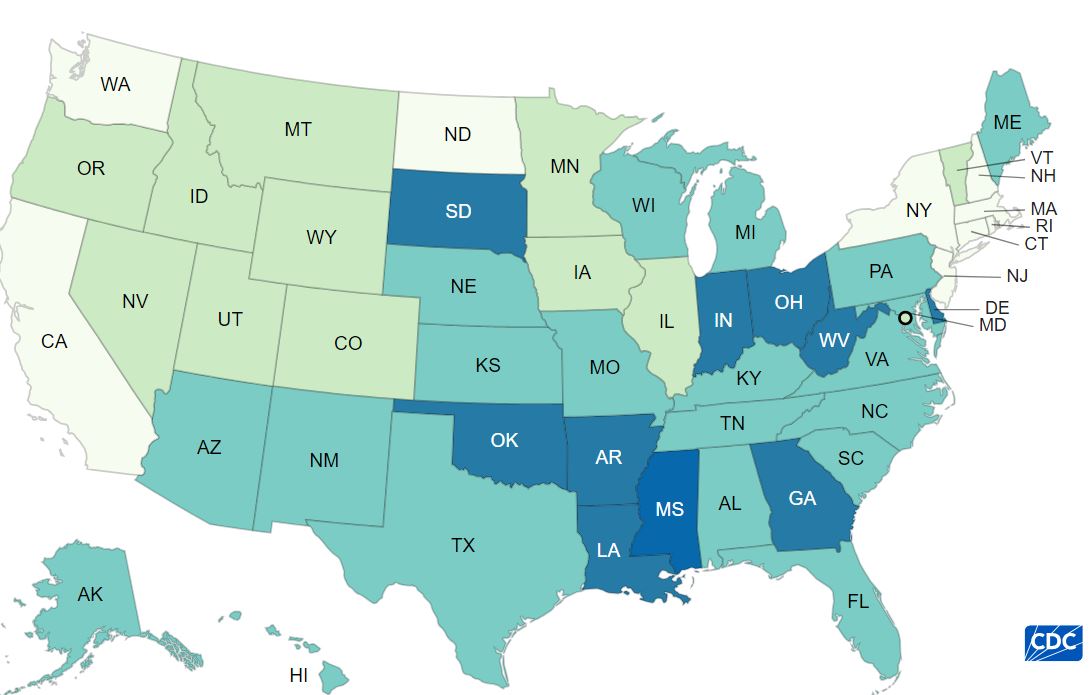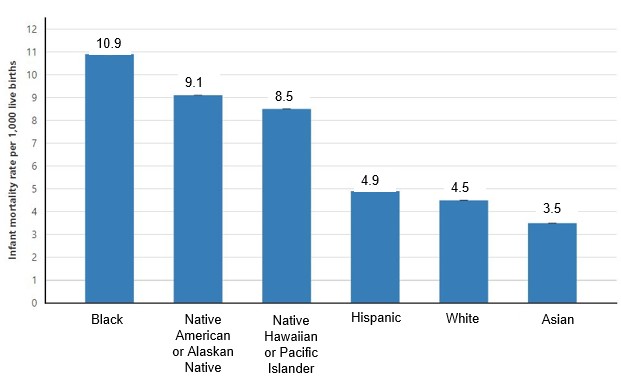Infant Mortality
Infant mortality is the death of young children under the age of 1 and infant mortality rate (IMR) is the number of deaths of children under one year of age per 1000 live births. Infant mortality rate is used to standardize infant deaths for global comparisons (WHO, 2019). Premature birth is the largest contributor to the IMR. Other leading causes of infant mortality are birth asphyxia, pneumonia, congenital malformations, diseases and malnutrition. Many factors contribute to infant mortality, such as the mother’s level of education, environmental conditions, and political and medical infrastructure. Improving sanitation, access to clean drinking water, immunization against infectious diseases, and other public health measures can help reduce high rates of infant mortality.
In 2021, the global infant mortality rate was 29 (World Health Organization, 2024). This marks a significant improve in overall infant mortality. In 1990, the infant mortality rate was 65 live births per 1000 deaths. The improvements in childhood mortality are largely attributed to improvements in maternal health and access to healthcare professionals, as well as increased access to vaccines and nutritional support (World Health Organization, 2024). At this time Afghanistan has the highest infant mortality rate in the world, 101 deaths for every 1000 live births followed by Somalia (84) and the Central African Republic (81). Countries with the lowest IMR include Slovenia, Japan, Iceland, and Monaco , all of which have rates lower than 2 (CIA Factbook, 2020).
The infant mortality rate in the United States was about 6 deaths for every 1000 life births (5.6) (Center for Disease Control, National Center for Health Statistics, November 2023). The United States rates 55 in the world for infant mortality rate (CIA Factbook, 2020), despite spending much more on healthcare per capita. The relatively high IMR, when compared to other more developed countries raises questions about culture and the impact of health disparities on infant health.
There are dramatic disparities in infant mortality rate based on geographic location, as well as by race/ethnicity. According to the Center for Disease Control National Center for Health Statistics (2022), California had the lowest infant mortality rate (4.1), followed by Connecticut, New York and Washington. The state with the lowest infant mortality rate was Mississippi followed by South Dakota, Arkansas, Louisiana, and West Virginia.

The infant mortality rate for Black infants (10.9) is double the national average (5.6) and almost three times greater than the infant mortality rate for Asian infants (3.5). The infant mortality rate is higher than the national average for Native American infants (9.1) and Native Hawaiian infants (8.5). The rates is lower for Hispanic infants (4.9) and White infants (4.5) but are still higher than the rate for Asian infants (Center for Disease Control, National Center for Health Statistics, 2024).

Calculation Issues
The reported IMR provides one statistic which reflects the standard of living in each nation. However, the method of calculating IMR often varies widely between countries, based on how they define a live birth and how many premature infants are born in the country. For these reasons, reporting infant mortality rate can be inconsistent and may be understated.
Disparities in Infant Mortality Rates
Disparities in infant mortality rates are the result of several factors including limited access to quality healthcare, malnutrition, and diseases that are preventable. Additionally, war and conflict also have a negative impact on infant mortality. Health disparities in infant mortality highlights the uneven distribution of wealth and access in some parts of the world. Many of these factors are also present in the United States and contribute to the intracultural disparities in infant mortality.

